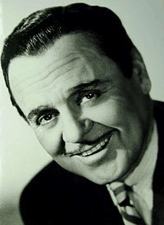August 6, 1880 – September 10, 1961

Movie Cowboy: Leo Carrillo was an actor, preservationist and conservationist who was born in Los Angeles in 1880. His beginnings, however, were in San Diego where his grandparents Josefa (Bandini) and Boston-educated Pedro Carrillo, were married. There, they maintained their residence and raised a large family. As a wedding gift, Governor Pio Pico awarded them title to Coronado Island which they sold 23 years later for $1,000. As Leo jokingly observed, “I think the family let it go too soon.”
The family moved from San Diego to Los Angeles then to Santa Monica, where Carrillo’s father Juan José Carrillo served as the city’s police chief and later the first mayor. His cousin was Broadway star William Gaxton (real name Arturo Antonio Gaxiola). Proud of his heritage, Leo Carrillo wrote a book, The California I Love, published shortly before his death in 1961.
Leo Carrillo worked as a newspaper cartoonist for the San Francisco Examiner before turning to acting, appearing in 15 major stage plays (several on Broadway) and more than 90 motion pictures in which he was featured in supporting or character roles.
He worked with the very biggest stars in Hollywood. But his greatest fame came from his portrayal of Pancho, the mischievous sidekick to Duncan Renaldo’s Cisco Kid in the pioneering television series of the early 1950s. The Cisco Kid was based on an O. Henry short story which in turn was drawn from Cervantes’ Don Quixote. In this classic Spanish novel the sidekick was named Sancho Panza. Shot entirely in color, a first in tv production, its enormously popular 156 action-western episodes ran for six years, from 1950 until 1956. Pancho’s horse’s name was Loco.
As his showmanship blossomed Leo experienced parallel success as a politically well-connected supporter of recreational and cultural resources for the public. He served 18 years on the California Beaches and Parks Commission and the Leo Carrillo State Park near Malibu is named in his honor. He was a key factor in the development of the Los Angeles Olvera Street complex, the Los Angeles Arboretum and the Anza-Borrego Desert State Park. Most notably, his personal relationship with the family led to the acquisition of the famous Hearst Castle at San Simeon. He toured the world as the state’s official Ambassador of Good Will. California’s governor of the time, Edmund G. Brown, called Leo “Mr. California.”
At the peak of his film career Leo felt an intense yearning to find a retreat where he could re-create an Old California-style working rancho, an important cultural asset he felt was rapidly dying out. In 1937 he came across the Rancho de Los Kiotes in what is now southeast Carlsbad and which was once owned by the Kelly family, very large, long-standing landowners in the area. Leo quickly snapped up his first 840 acres for $65,000 or $77 per acre. He immediately began construction of 18 structures necessary for his ranch operations and, over time, increased his spread to 2,538 acres.
In 1977 the city acquired a tiny 10.5 acre remnant that contained and protected the most critical original buildings. Thanks to a state preservation grant and matching funds contributed by local civic organizations, some of the buildings were seismic retrofitted and partially restored in 1992. A $5.5 million catch-up round of restoration has now been completed. A required transfer of 16.4 acres from contiguous residential developers has expanded the Park site to 27 acres. Leo Carrillo Ranch Historic Park is an extraordinary educational and passive recreational resource, the envy of all Californians, and a visitor destination.
Leo Carrillo died of cancer in 1961 and was interred in the Woodlawn Memorial Cemetery in Santa Monica.





